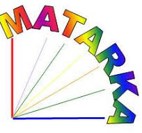Kis Apolló-lepkék (Parnassius mnemosyne) élőhelyhasználata nektárforrásuk és lárvális tápnövényük függvényében
Absztrakt
Hatékony természetvédelmi stratégiák kidolgozásához részletes ismeretek szükségesek a védett fajok élőhelyigényeiről. A kis Apolló-lepkék élőhelyen belüli forrásoktól való függését, azok tér- és időbeli változását vizsgáltuk egy hazai dombsági réten. Vizsgáltuk, hogy a lepke élőhelyhasználatát a tápnövény vagy a legkedveltebb nektárnövény előfordulása határozza-e meg. A kis Apollók élőhelyen belüli előfordulási gyakorisága nőtt a nektárnövény gyakoriságával és a nyílt területek arányával, de a lárvális tápnövény gyakorisága ezt nem befolyásolta. A rajzási időszak folyamán változott a lepkék térbeli előfordulása, ami a nektárnövény eloszlásának változásával állhat kapcsolatban. Feltételezésünk szerint a kis Apolló-lepke számára olyan mozaikos élőhelyek az ideálisak, ahol egymáshoz közel találhatók nyílt gyepterületek (nektárforrás) és zárt erdőfoltok (tápnövény). Nektárforrások híján a nyílt területek ökológiai csapdák lehetnek, míg a nektárforrásokban gazdag rétek beerdősülése lokális kihaláshoz vezethet.
Hivatkozások
Bergström, A. (2005): Oviposition site preferences of the threatened butterfly Parnassius mnemosyne – implications for conservation. – J. Insect Conserv. 9: 21–27.
Bivand, R. (2014): spdep: Spatial dependence: weighting schemes, statistics and models.
Boggs, C. L. & Freeman, K. D. (2005): Larval food limitation in butterflies: effects on adult resource allocation and fitness. – Oecologia 144: 353–361.
Bolotov, I. N., Gofarov, M. Y., Rykov, A. M., Frolov, A. A. & Kogut, Y. E. (2013): Northern boundary of the range of the Clouded Apollo butterfly Parnassius mnemosyne (L.) (Papilionidae): climate influence or degradation of larval host plants? – Nota Lepidopterol. 36: 19–33.
Dennis, R. L. H. (szerk.) (2010): A Resource-Based Habitat View for Conservation: Butterflies in the British Landscape. – Wiley-Blackwell, 420 pp.
Dormann, F. C. M., McPherson, J. B., Araújo, M., Bivand, R., Bolliger, J., Carl, G. G., Davies, R., Hirzel, A., Jetz, W., Daniel Kissling, W., et al. (2007): Methods to account for spatial autocorrelation in the analysis of species distributional data: a review. – Ecography 30: 609–628.
Erhardt, A. & Mevi-Schütz, J. (2009): Adult food resources in butterflies. – In: J. Settele et al. (szerk.): Ecology of Butterflies in Europe. Cambrige University Press, Cambridge, pp. 9–16.
Konvička, M. & Kuras, T. (1999): Population Structure, Behaviour and Selection of Oviposition Sites of an Endangered Butterfly, Parnassius Mnemosyne, in Litovelské Pomoravíl. Czech Republic. – J. Insect Conserv. 3: 211–223.
Konvička, M., Vlasanek, P. & Hauck, D. (2006): Absence of forest mantles creates ecological traps for Parnassius mnemosyne (Papilionidae). – Nota Lepidopterol. 29: 145–152.
Kuusemets, V., Meier, K. & Liivamägi, A. (2005): Habitat and landscape structure requirements of Clouded Apollo (Parnassius mnemosyne). – In: E. Kühn et al. (szerk.): Studies on the Ecology & Conservation of Butterflies in Europe. Pensoft, Sofia-Moscow, pp. 18–21.
Liivamägi, A., Kuusemets, V., Luig, J. & Kask, K. (2013): Changes in the distribution of Clouded Apollo Parnassius mnemosyne (Lepidoptera: Papilionidae) in Estonia. – Entomol. Fenn. 24: 186–192.
Luoto, M., Kuussaari, M. & Rita, H. (2001): Determinants of distribution and abundance in the clouded apollo butterfly: a landscape ecological approach. – Ecography 24: 601–617.
Meglécz, E., Nève, G., Pecsenye, K. & Varga, Z. (1999): Genetic variations in space and time in Parnassius mnemosyne (L.)(Lepidoptera) populations in north-east Hungary: implications for conservation. – Biol. Conserv. 89: 251–259.
New, T., Pyle, R., Thomas, A., Thomas, C. D. & Hammond, P. C. (1995): Butterfly conservation management. – Annu. Rev. Entomol. 40: 57–83.
New, T. R. (szerk.) (2012): Insect Conservation: Past, Present and Prospects. – Springer, 436 pp.
Parmesan, C., Ryrholm, N. & Stefanescu, C. (1999): Poleward shifts in geographical ranges of butterfly species associated with regional warming. – Nature 399: 579–583.
Potts, S., Biesmeijer, J. & Kremen, C. (2010): Global pollinator declines: trends, impacts and drivers. – Trends Ecol. Evol. 25: 345–353.
R Core Team (2013): R: A Language and Environment for Statistical Computing Foundation for Statistical Computing, Vienna, Austria. – Elérhető: http://www.r-project.org/
Settele, J. (szerk.) (2008): Climatic risk atlas of European butterflies. – Pensoft, Sofia-Moscow, 710 pp.
Settele, J., Dover, J., Dolek, M. & Konvička, M. (2009): Butterflies of European ecosystems: impact of land use and options for conservation management. – In: Settele, J. et al. (szerk.): Ecology of Butterflies in Europe. Cambridge University Press, Cambridge, pp. 353–370.
Simberloff, D. (1998): Flagships, umbrellas, and keystones: is single-species management passé in the landscape era? – Biol. Cons. 83: 247–257.
Szigeti, V. (2012): Nektárnövény kínálat és fogyasztás a kis Apolló-lepkénél: Parnassius mnemosyne, Szakdolgozat. – Szent István Egyetem, Budapest.
Välimäki, P. & Itämies, J. (2005): Effects of canopy coverage on the immature stages of the Clouded Apollo butterfly with observations on larval behaviour. – Entomol. Fenn. 16: 117–123.
Van Swaay, C., Wynhoff, I., Verovnik, R., Wiemers, L. M., Maes, D., Sasic, M., Verstrael, T., Warren, M. & Settele, J. (2010): Parnassius mnemosyne. – The IUCN Red List of Threatened Species. Elérhető: www.iucnredlist.org
Wilson, R. J. & Maclean, I. M. D. (2010): Recent evidence for the climate change threat to Lepidoptera and other insects. – J. Insect Conserv. 15: 259–268.
Wood, S. N. (szerk.) (2006): Generalized Additive Models: An Introduction with R. – CRC Press, Boca Raton, 410 pp.






